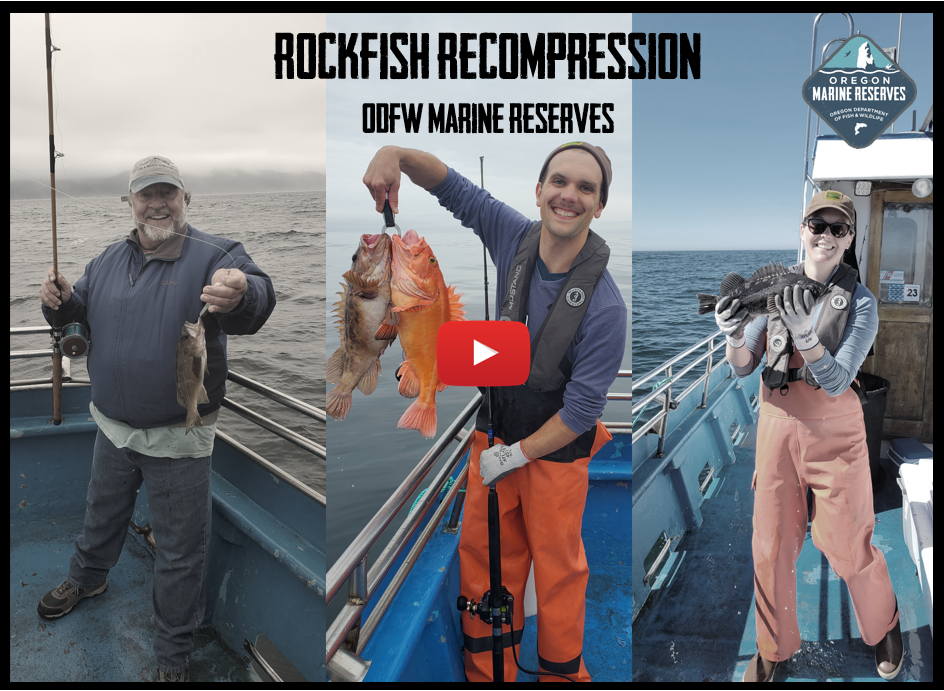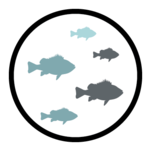Sharing 10 Years of Research with the Public
Photo: ODFW staff members Lindsay, Stephanie, and Tommy answer questions during the State of the Coast conference (left). ODFW staff members Stephanie and Ryan table at the Cape Perpetua Land and Sea Symposium (right).
This fall has brought many opportunities for the Marine Reserves Team to share results from our 2022 Marine Reserves Synthesis Report with the public.
During the first weekend of November, team members presented findings from both the ecological and human dimensions research at the State of the Coast conference in Newport – an annual gathering of scientists and community members that highlights current topics on the coast. This was part of a session entitled Oregon's Marine Reserves‚ Assessing the First Decade. Talks focused on research and insights learned during the first 10-years of the Marine Reserves Program and were paired with presentations from the OSU evaluation team on their assessment of the program.
Interim Ecological Project Lead, Stephanie Fields, presented at the Western Society of Naturalists conference in Oxnard, California. She was part of a special session focused on marine protected area science and management and presented a talk titled Marine Reserves the Oregon Way: Implementation, evaluation, and the first decade of research. She shared the evaluation process, results and lessons learned here in Oregon with a more California-focused crowd - who’s marine protected area network is going through a similar decadal review process.
Finally, the ecological team hosted an outreach table at the Cape Perpetua Land and Sea Symposium in Yachats to share findings from Oregon's marine reserves. Former Program Lead, Cristen Don, presented on behalf of the program and participated in a panel discussion about reflections on the Cape Perpetua Marine Reserve implementation and the future of reserves in Oregon. This annual event is put on by the Cape Perpetua Collaborative and celebrates the conservation work accomplished in the Cape Perpetua area.
For a deeper dive into the discoveries at all of our marine reserves, please check out the Marine Reserves Program Synthesis Report (2009-2021).
 Photo: Click video above to learn about Rockfish Recompression
Watch this video to learn how we help get fish back down to the seafloor after they are caught on catch-and-release hook-and-line surveys. Many rockfish species experience barotrauma: physiological effects due to the rapid changes in water pressure and expanding air in their bodies. Sometimes they need a little extra assistance to swim back down and recompress that expanded air. We use ‘descending devices’ that help drop fish safely back to deeper waters where they can swim another day. As an extra treat, check out this underwater video showing the use of a Seaqualizer with a large Red Snapper in the Gulf of Mexico to see how these devices release the fish.
Photo: A salinity and temperature sensor is covered in Pelagic Gooseneck Barnacles (Lepas anitifera) after a full summer of deployment at the Redfish Rocks Marine Reserve.
We finished up our fall fieldwork this month:
 |
|
Redfish Rocks: SMURF (Standardized Monitoring Units for the Recruitment of Fishes) moorings and oceanographic sensors were pulled out of the water at the reserve and its comparison area, concluding our 2022 field season. |
Explore More Marine Reserves News

|